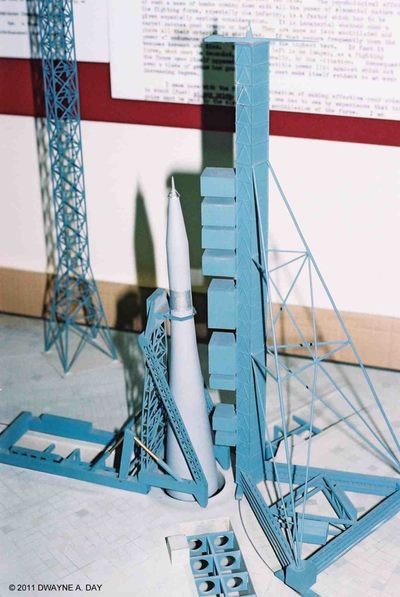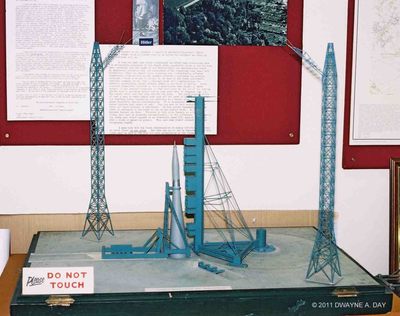Sub-scale and classified: the top secret CIA model of a Soviet launch padby Dwayne A. Day
|
| The program numbers were an operational necessity, and they were intended to conceal the identity of a specific payload. Nevertheless, they made it possible for people outside of the military—and presumably for the KGB as well—to track programs in a rudimentary way. |
But Webb’s comments were based upon evidence: extensive satellite images of a massive launch facility at Tyura-Tam (now commonly referred to as Baikonur) in Kazakhstan. The United States intelligence community had even obtained photographs of the large Moon rocket, although for awhile after it first showed up intelligence analysts were not positive that the rocket was intended for lunar missions. They had been perplexed by the relative slow pace of development for the program, which made it appear that the Soviets were not making a best effort to beat America to the Moon. These intelligence analysts were generally unaware of the disagreements and infighting that plagued the Soviet effort. The Soviets were in a race, but they were like a star athlete who lacked focus, and preferred to go to the pub rather than the practice field.
The photographs of the rocket and the support facilities—few of which have been released to date—were still somewhat limited. Nobody had anything like Google Earth, with the ability to manipulate a terrain image with ease. So the CIA also built models.
According to declassified records, CIA model builders built at least three models depicting the large Soviet rocket launch facility which the CIA had designated Complex J. As of a few years ago, one of these models was on display in the CIA Headquarters museum. (It might still be on display there today. See “Rockets, real and model-sized”, The Space Review, July 3, 2006.) But another of the models has also turned up in an odd place: a British military base museum.
 A model of the N-1 launch pad is on display in a British military base museum. (credit: © D. Day) |
The United States and the United Kingdom have long had a close relationship. The United States provided the UK with plutonium when the British ran short. The two countries also shared a tremendous amount of intelligence information. In fact, the United States made a duplicate set of satellite reconnaissance film during the Cold War and shipped it over to the UK for British intelligence analysts to use in their evaluations of the Soviet Union. So it is not that surprising that a once-top-secret CIA model showed up at a British facility.
The model depicts one of the launch pads for the Soviet’s giant N-1 lunar rocket. The model sits on a base approximately a meter long and is made of a blue plastic, probably sheet styrene. It is remarkably detailed, demonstrating the fact that it was made with the assistance of some very high resolution reconnaissance photographs. The launch tower can swivel on its base, just like the real thing. Even the underground flame trenches—which in actuality are massive—are depicted below the launch support tower. The display features a gray-painted giant N-1 rocket, which launched four times and failed four times, one time blowing up right above one of the two launch pads and severely damaging it. The rocket model does not have any of the details of the real thing, and if the CIA has a precision model of the Soviet era Moon rocket, it has not been publicly displayed anywhere yet. (At least not that I know about, but I haven’t toured many British military bases yet.)
Perhaps the biggest surprise—bigger than the fact that this model exists at all, or that it was on display in an obscure UK location—is the fact that in over four decades, nobody broke it. Maybe the fact that it was top secret for so long might have helped. Fortunately, not many kids have security clearances.
